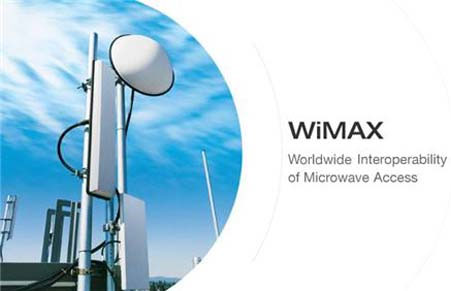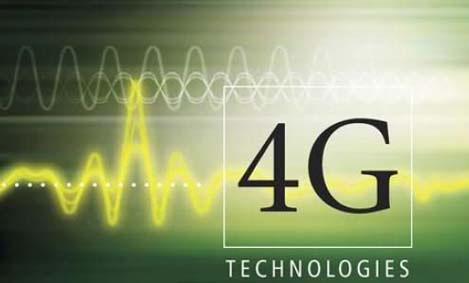4G - technology of the future
4G is the fourth wireless communication technology, allowing data transfer at 100MB / s while on the move and has a speed of 1GB / s when users are fixed .
The difference between 3G and 4G
Currently, 3G technology allows wireless Internet access and video calls. 4G was developed on the attributes inherited from 3G technology. Theoretically, 4G wireless networks will be 4 to 10 times faster than 3G networks. The maximum speed of 3G is the download speed of 14Mbps and 5.8Mbps upload. With 4G technology, speeds can reach 100Mbps for mobile users and 1Gbps for fixed users.
Basic technologies on 3G platform, including WCDMA, EV-DO, and HSPA. Currently, when deployed, many networks have named the new technology, 4G, combining technological standards such as LTE, WiMax and UMB. However, these technologies are only used before 4G or just 3.9G; No technology is really 4G.
Until now, 3G technology has been developing and gradually improving, in 4G is the technology of the future because the speed of access cannot meet the true speed that this standard offers. It will take a lot of effort for operators to reach the 'massive' speed of 4G.
4G - Proactive technologies

WiMax - pioneering technology in 4G field.
Among the pioneering technologies in the field of 4G, must include LTE, UMB and WiMax. All 3 use new antenna technology, thereby improving data transmission speed and distance. However, these three technologies are still considered as pre-4G technologies.
IEEE 802.16m (WiMAX): IEEE 802.16m, or WiMAX, was developed from the IEEE 802.16e standard of the Electrical and Electronic Engineering Institute. This technology supports data transfer rates up to 100 Mb / s for mobile applications and can be up to 1 Gb / s for static users.
Intel is leading the way to using and developing WiMAX for 4G systems, along with the cooperation of Alcatel-Lucent, AT&T, Motorola, Nokia, Samsung and Sprint Nextel.
LTE (Long-Term Evolution): 4G LTE was developed from 3GPP, the foundation of GSM telecommunications technology (Global System for Mobile Communications).
LTE uses frequencies dynamically, can operate in bands with widths ranging from 1.25 MHz to 20 MHz. The largest data transfer rate (theoretically) of LTE can reach 250 Mb / s when the bandwidth width is 20 MHz.
In fact, most of the world's leading telecom equipment manufacturers: Alcatel-Lucent, Ericsson, Motorola, Nokia, Nokia Siemens Networks, Huawei, LG Electronics, Samsung, NEC, Fujitsu . shook hands. With major carriers around the world (Verizon Wireless, AT&T, France Telecom-Orange, NTT DoCoMo, T-Mobile, China Mobile, ZTE .) conducted critical tests on LTE technology and have achieved significant success.
UMB (Ultra Mobile Broadband): UMB is developed by telecommunications companies of Japan, China, North America and South Korea, along with carriers such as Alcatel-Lucent, Apple, Motorola, NEC and Verizon Wireless.
UMB can operate in bandwidths ranging from 1.25 MHz to 20 MHz and work in multiple frequency bands, with data transfer rates of up to 288 Mb / s for downstream and 75 Mb / s for streaming. up with bandwidth usage of 20 MHz. Qualcomm is a leader in UMB development efforts, although it also develops LTE technology.
Currently, only the HTC EVO 4G phone that promises to be launched this summer can use 4G technology (although before that HTC has produced another 4G WiMax smart phone for a Russian telecom network but this model not universal). Sprint announced that it will exclusively distribute the second 4G phone model, Samsung Epic 4G, but has no official information on the launch date of this model.
In addition, Verizon also plans to distribute the first LTE phones in mid-2011. The technology community is also hoping that the carrier will sell a CDMA version of the iPhone that supports 4G.

4G in the future
So far, there is no clear standard for 4G to be adopted. Even the above 3 technologies are still considered as 4G money, which plays an important role in building 4G standards in the future.
As expected, the regions of Africa, Latin America, South Korea and the United States use CDMA popularity, so operators are directing their networks to grow according to UMB. For European countries, most use GSM, so they are gearing towards developing the network according to LTE. The rest of the world's telecom service providers are likely to develop networks under WiMAX II. However, these are all just predictions and the push for 4G will not happen until standardization processes are implemented and investors recover the capital they have invested in 3G and 3, 5G.
You should read it
- USB 3.0: good technology, but still waiting
- What is the maximum data transfer speed that USB-C can achieve?
- Google, Facebook, Microsoft and Twitter cooperate in an ambitious data project
- 7 ways to transfer data between 2 computers
- 500 GB - the largest capacity for laptop hard drives
- How to transfer data from old iPhone to new iPhone (iPhone X, iPhone 8, iPhone 7)
 Install and configure Verizon Network Access Manager
Install and configure Verizon Network Access Manager Changes in the CCNP exam
Changes in the CCNP exam Windows Intune Beta 2: New things
Windows Intune Beta 2: New things Chrome 5 Beta: Faster than a bullet
Chrome 5 Beta: Faster than a bullet Things to know about Google Apps
Things to know about Google Apps 10 things 'hateful' with Google's new interface
10 things 'hateful' with Google's new interface